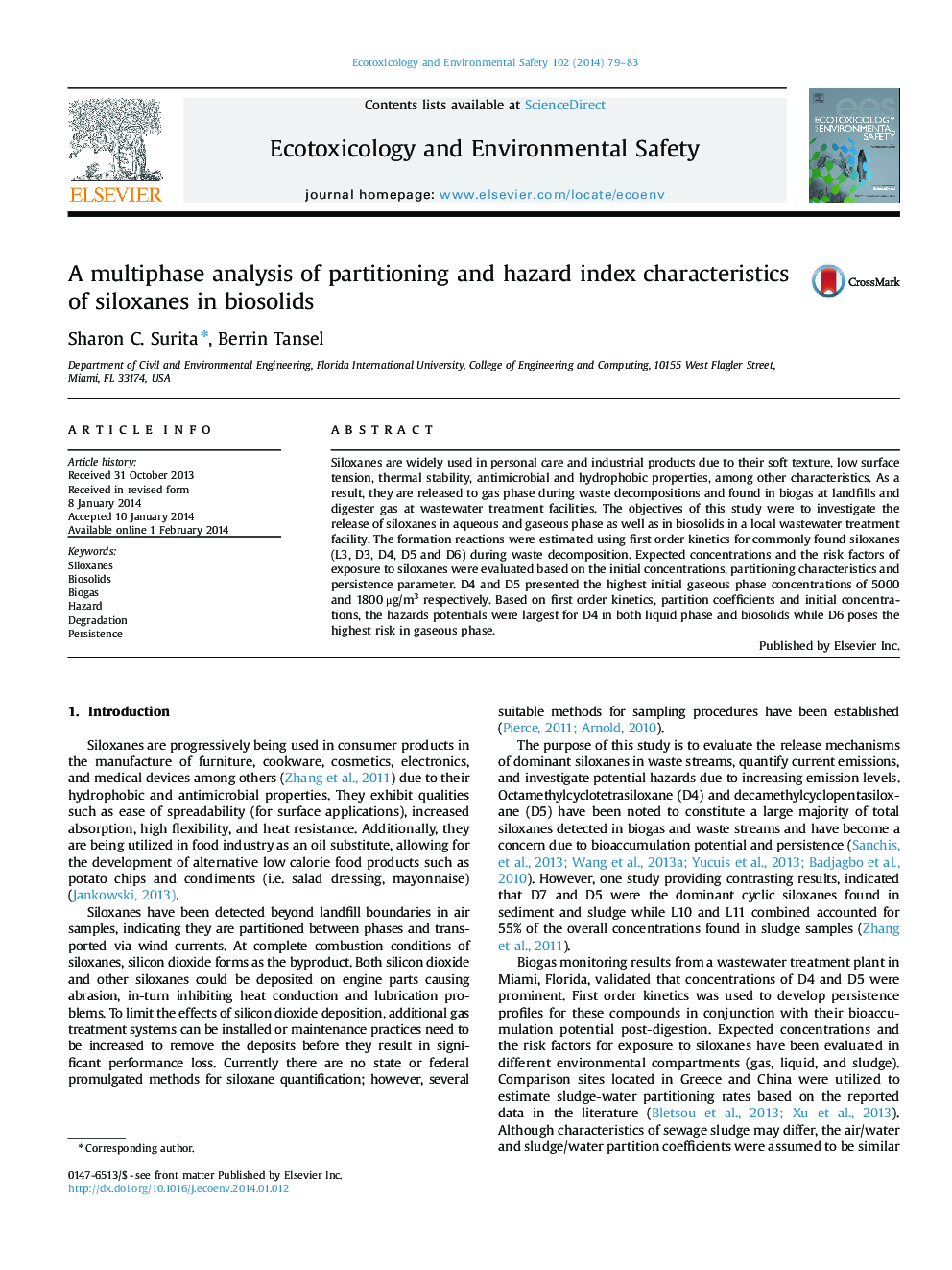| Article ID | Journal | Published Year | Pages | File Type |
|---|---|---|---|---|
| 6312195 | Ecotoxicology and Environmental Safety | 2014 | 5 Pages |
Abstract
Siloxanes are widely used in personal care and industrial products due to their soft texture, low surface tension, thermal stability, antimicrobial and hydrophobic properties, among other characteristics. As a result, they are released to gas phase during waste decompositions and found in biogas at landfills and digester gas at wastewater treatment facilities. The objectives of this study were to investigate the release of siloxanes in aqueous and gaseous phase as well as in biosolids in a local wastewater treatment facility. The formation reactions were estimated using first order kinetics for commonly found siloxanes (L3, D3, D4, D5 and D6) during waste decomposition. Expected concentrations and the risk factors of exposure to siloxanes were evaluated based on the initial concentrations, partitioning characteristics and persistence parameter. D4 and D5 presented the highest initial gaseous phase concentrations of 5000 and 1800 μg/m3 respectively. Based on first order kinetics, partition coefficients and initial concentrations, the hazards potentials were largest for D4 in both liquid phase and biosolids while D6 poses the highest risk in gaseous phase.
Related Topics
Life Sciences
Environmental Science
Environmental Chemistry
Authors
Sharon C. Surita, Berrin Tansel,
